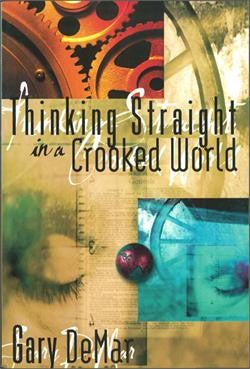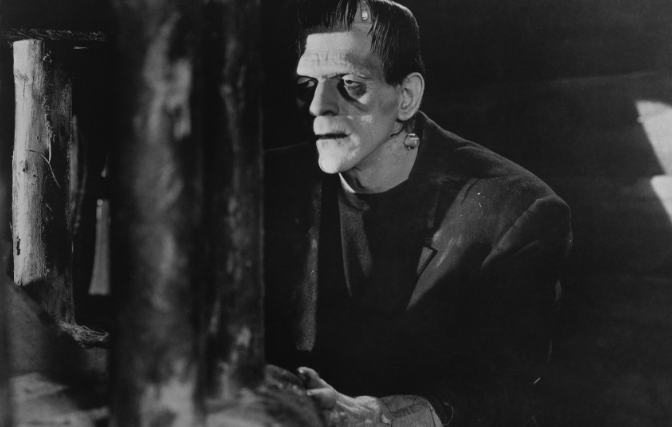Popular culture is one way to track shifting opinions about paranormal and occult experiences. Before television’s debut, soon after the Second World War, music, literature, and film were expressions of popular culture for the masses. Film brought literary works to life that many people talked about but rarely read. Abraham “Bram” Stoker’s Dracula(1897) was the first novel of its type to make it to the big screen, although there were earlier stage productions of the work. There is a ballet production of Dracula.
Silent film star Lon Chaney, Sr., “the man of a thousand faces,” captivated and frightened audiences with his performances of strange and sympathetic characters. He was born to deaf parents and traveled in a theatrical troupe where he “befriended outcasts, misfits and the deformed, seeing the humanity in each.”[1] Chaney was the first choice to play Dracula, but his untimely death in 1930 meant the part would go to Hungarian-born stage actor Bela Lugosi. With the production of Dracula in 1931, a dramatic shift in worldviews was noticed. While Chaney’s “most terrifying disguises were, in the final analysis, human stories, this Dracula was about a bloodsucking demon from hell!”[2] But this living-dead demon could be destroyed. A crucifix could keep him at bay.[3] The light of day would turn Dracula to dust. A wooden stake driven into his undead heart would send him to eternal damnation. Of course, these remedies against the demonic are nothing more than superstitions.
Elements of the Christian worldview are still evident in this early horror film with its prominent occult themes. “Both Christ and Dracula deal with blood and eternal life. Vampirism is, as Renfield [Dracula’s insect-eating slave] makes clear, the antithesis of Christianity. Whereas Christ shed his blood so that his followers could have eternal life; Dracula shed his followers’ blood so that he could have eternal life.”[4]
At the end of the film, as sunlight streams through the windows of the dank and dark English castle, church bells are heard in the distance. The film reminds us that, while God is still alive, demons roam the earth in the form of celluloid squares whose images are projected onto a silver screen by light. Script writers and novelists form the modern conception of God, Satan, and evil. Dracula was a kindly old uncle compared to today’s devil-inspired monsters.
Christian writers unwittingly impute powers to Satan that are God’s alone. Neil Anderson, author of Bondage Breaker, writes, “I have no question that [the occult] works.”[5] Merrill F. Unger, author of several books on demonology, believes that “though Scripture condemns magic, it clearly recognizes the reality of its power.”[6] C. Fred Dickason wrote in Demon Possession and the Christian, “Occult magic includes demonic forces that actually produce detectable phenomena.”[7] If the occult “works,” and Satan can impute real powers to those who ask for it, then Satan is God’s true spiritual competitor. This cannot be, since Satan is a mere creature, just one of many angels. “When Peter preached at Pentecost, he attested that Jesus was ‘accredited by God to you by miracles, wonders and signs, which God did among you through him [Acts 2:22].’ Hebrews 2:3, 4 indicates that the message of Christ’s followers was also authenticated by miracles of God. The power of Satan, on the other hand, is deception, not a miracle. If he could really work a miracle, it would suggest that he is divine. That’s why 2 Thessalonians 2:9 reads, ‘The coming of the lawless one will be in accordance with the work of Satan displayed in all kinds of counterfeit miracles, signs and wonders.’”[8] Why couldn’t Peter’s critics claim, since Satan can also “produce detectable phenomena,” that these miracles were demonic? Why should they follow this Jesus when Satan might have equal power? Maybe Satan has something better to offer, and God is hiding powerful secrets from us (Gen. 3:1-7).

Why It Might Be OK to Eat Your Neighbor
The most damning assessment of a matter-only cosmos devoid of a Creator is that we got to this place in our evolutionary history by acts of violence whereby the strong conquered the weak with no one to support or condemn them. Why It Might Be OK to Eat Your Neighbor repeatedly raises the issue of accounting for the conscience, good and evil, and loving our neighbor. It’s shocking to read what atheists say about a cosmos devoid of meaning and morality.
Buy NowJesus makes it clear that His miracles should not and cannot be attributed to Satan since Satan has no such power. Satan might try to fool people into believing he can duplicate the miracle-working power of Jesus. Still, Jesus assures us that Satan has no such power (Matt. 12:29). While Satan can possess a man, this does not mean that he can give him occult powers to compete with those of Jesus and His disciples. Having the ability to break chains does not mean that occult powers are present (Mark 5:4). There are people today who can do similar feats of strength with much stronger metals than were available in the first century. If this demon-possessed man had occult powers, then he should have been able to disappear, make the chains disappear, float through the air, or do some other incredible feat.
The horror genre matured rapidly with the release of Frankenstein (1931), The Mummy (1932), The Bride of Frankenstein (1935), and The Wolf Man (1941). The monsters in Frankenstein and The Bride of Frankenstein were brought to life with elements from nature and the symbol of the new Enlightenment scientist, electricity. In the eighteenth and nineteenth centuries, electricity was more than just a symbol of scientific discovery. Some were touting it as the substance of life. Electricity was seen as a “life force” independent of the need for a divine Creator, as was mathematics, used to unravel the orderliness of the universe, independent of any divine intervention.
The theme of reanimation in Mary Wollstonecraft Shelley’s Frankenstein, or the Modern Prometheus (1818), the novel on which the first film is very loosely based, was written against the backdrop of an emerging humanistic science. The study of electricity was all the rage in Shelley’s day, from Benjamin Franklin’s experiments with kites and keys to European scientists who applied electrical currents using batteries “to dead animals and human cadavers, creating muscular contractions.”[9] (Some have suggested that the “Frank” in Frankenstein may have been inspired by the electrical experiments done by Benjamin Franklin.)[10] Mary Shelley’s husband experimented very early with electricity and dead animals. Like any good science fiction writer, Shelley wove contemporary science and character traits of people she knew into a powerful literary metaphor infused with moral lessons.
Incantations, witches, and magic spells play no role in the creation of Frankenstein’s monsters. These are purely man-made conglomerations, even though the devil lurks just below the surface of their work. Keep in mind, however, that there is no way to avoid God as creator in these films since Dr. Frankenstein reanimates only what God first animated. Frankenstein’s monster was put together from other humans of God’s making. There is no ex-nihilo creation, a creation from nothing, or even a creation from the “dust of the ground” (Gen. 2:7). Even so, it still would have been God’s dust.
In the Bride of Frankenstein, Dr. Septimus Pretorious, played creepily by Ernest Thesiger, beguiles Dr. Frankenstein into playing God. He convinces his former pupil of the unlimited possibilities of science with no religious restraints. The spooky doctor, dressed in black, including a medieval alchemist’s skull cap, shows Frankenstein some of his latest creations: seven miniature, toy-like beings in jars. If there is a hint of the demonic, it’s here. When Henry Frankenstein gazes upon the little people, he comments appropriately, “But this isn’t science. It’s more like Black Magic.” Pretorious dismisses the notion, informing Frankenstein that he grew them “as Nature does—from seed.” True Satanism is not in occult powers but in the high-handed idea that man can be god (Gen. 3:5), a much more subtle and prevalent practice.
In Johann Goethe’s nineteenth-century drama Faust (1773), the title character creates a living homunculus, or “little human being,” in a vessel over a fire. Faust, you will recall, sells his soul to the devil in exchange for esoteric powers and hidden (occult) knowledge. Shelley has Dr. Frankenstein studying the medieval works of Cornelius Agrippa, Paracelsus, and Albertus Magnus, who were noted for their work as astrologers, mystics, and alchemists.

Thinking Straight in a Crooked World
The nursery rhyme "There Was a Crooked Man" is an appropriate description of how sin affects us and our world. We live in a crooked world of ideas evaluated by crooked people. Left to our crooked nature, we can never fully understand what God has planned for us and His world. God has not left us without a corrective solution. He has given us a reliable reference point in the Bible so we can identify the crookedness and straighten it.
Buy NowOne of Dr. Pretorious’s creations-in-a-jar is the devil. Pretorious asks Frankenstein if he notices the resemblance.[11] “The next one is the very Devil—very bizarre, this little chap. There’s a certain resemblance to me, don’t you think? Or do I flatter myself? I took a great deal of pains with him. Sometimes I have wondered whether life wouldn’t be much more amusing if we were all devils, and no nonsense about angels and being good.”[12] Spoken like a true humanist, and not far off from how modern-day secularism operates. Before meeting Pretorious, Frankenstein reveals his misgivings to his wife: “I’ve been cursed for delving into the mysteries of life. Perhaps death is sacred, and I profaned it…. I dreamed of being the first to give to the world the secret that God is so jealous of—the formula for life.” Elizabeth warns Henry: “Don’t say those things. Don’t think them! It’s blasphemous and wicked. We are not meant to know those things.” Henry won’t give up the wonder and exhilaration of it all. Deep down, he believes he is “intended to know the secret of life. It may be part of the Divine Plan.” Elizabeth knows better. “No, no! It’s the Devil that prompts you. It’s death, not life, that is in it all and at the end of it all.”
[1] Bob Longino, “More to actor Lon Chaney than even his ‘1,000 faces,’” Atlanta Constitution (October 24, 2000), D3. James Cagney starred in the film biography of Chaney, The Man with a Thousand Faces. His son, Lon Chaney Jr., carried on his father’s legacy by starring in several horror films, most notably The Wolf Man.
[2] David J. Skal, The Monster Show: A Cultural History of Horror (New York: W.W. Norton, 1993), 115.
[3] When Renfield cuts his finger on a paper clip, Dracula reacts eagerly to the sight of blood and moves closer with a ravenous, blood-maddened look. Before the Count can get closer, a crucifix falls from Renfield’s neck and dangles over his hand, sending Dracula reeling backward. To shield himself, Dracula throws his arm over his eyes.
[4] E. Michael Jones, Monsters from the ID: The Rise of Horror in Fiction and Film (Dallas, TX: Spence Publishing Co., 2000), 124.
[5] Neil T. Anderson, The Bondage Breaker (Eugene, OR: Harvest House, 1990), 115.
[6] Merrill Unger, Demons in the World Today (Wheaton, IL: Tyndale, 1971), 79.
[7] C. Fred Dickason, Demon Possession and the Christian (Chicago, IL: Moody Press, 1987), 218.
[8] André Kole and Jerry MacGregor, Mind Games: Exposing Today’s Psychics, Frauds, and False Spiritual Phenomena (Eugene, OR: Harvest House, 1998), 79.
[9] David J. Skal, Screams of Reason: Mad Science and Modern Culture (New York: W. W. Norton & Co., 1998), 37.
[10] Skal, Screams of Reason, 43.
[11] Jeremy Dyson, Bright Darkness: The Lost Art of the Supernatural Horror Film (London, England: Cassell, 1997), 55.
[12] James Whale, the director of Frankenstein and The Bride of Frankenstein, was a prominent and public homosexual in Hollywood. Dr. Pretorious is Whale’s alter ego. Frankenstein and Pretorious “work together to ‘give birth’ to a woman, two homosexuals replacing the heterosexual model of male and female parenting and replacing God—annihilating those noxious enemies of homosexuality, society and religion in one blow.” (Gary Morris, “Sexual Subversion,” Bright Lights Film Journal, Issue 11 [1993]).

